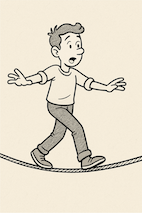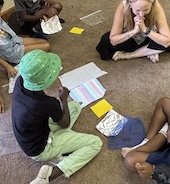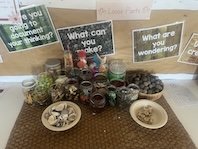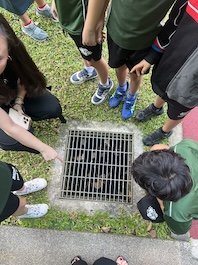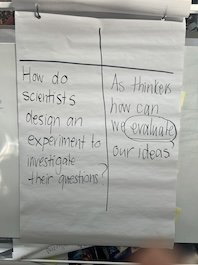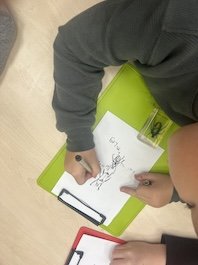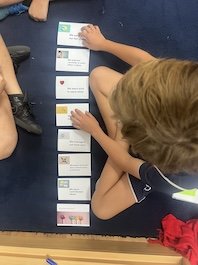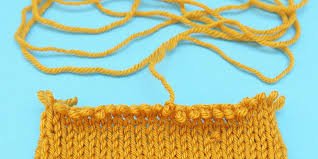In early June this year, my healthy, vibrant, eldest daughter contracted a serious (and mysterious) infection that left her gravely ill and with a damaged heart. I managed to get to London within 24 hours of her being admitted to hospital. Little did I know we would not be leaving for three months, 6 weeks of which would be in hospital. We are back in Australia now for continued treatment and I am gradually back working in schools. While my sole focus at the time was on caring for my sick child, this rather personal post (a few months down the track) is a reflection on some of the ways this traumatic experience got me thinking about our work as teachers. Writing is my main ‘meaning making’ strategy … I hope some of that meaning making resonates with you.
So. What did I learn (or understand more deeply?)
Fear is the mind-killer. (Frank Herbert)
Never has this famous phrase (attributed to Frank Herbert) resonated with me as much as it has over the last three months. The intense, all-encompassing fear that drenched my body on hearing bad news, on being told of possible consequences of infection, or the side effects of a procedure walked with me every day. And what I noticed, of course, was that when it was strongest, my mind would go blank. There was no room for anything else. No rational, considered thought – just a jangle of internal panic made worse by having to ‘put on a brave face’. Doctors would be explaining something to me and I simply could not take it in. Schools are not hospitals, but for too many children, schools can be a place in which fear dwells. Whether it be fear of not getting it right, fear of being ‘cold called’, fear of separation, fear of not belonging … And when fear enters our body, our minds shut down. Fear is indeed the mind killer, and classrooms must be safe places for our learners to flourish, to take risks, to think and to struggle productively.
Being comfortable with uncertainty is easier said than done
I have been banging on about living with uncertainty for decades. It’s one of the catch cries of those of us who champion more progressive ways of approaching teaching and learning. Over the last three months I have lived with more uncertainty than I can remember ever having experienced before. For weeks, we dwelt in a sea of unanswered questions and were adrift in the unknown. There was nothing edifying about that state – it was completely enervating. When I reflect on it in terms of classroom cultures, I am reminded of the paradox of uncertainty. That in order to live well and comfortably with uncertainty– we need some certainty. Dependable routines, predictable parts of the day and week and other known elements provide anchors that allow the unexpected to delight rather than derail. Our children are better equipped to manage the unknown when there is plenty of ‘known’ to lean on.
Questions get better over time
Many of us see questions as the jewel in the crown of inquiry – and indeed, it is hard to imagine an inquiry classroom without them. Questions were certainly an important part of this experience but, as is the case with so many journeys of inquiry in the classroom, the more we learned, the more helpful and considered our questions became. Life brought us a terrifying and unexpected ‘provocation’ but in the absence of information and in a state of ignorance (and fear) the journey began with experience and listening rather than a surge of questions. When the questions did start to bubble up, I found myself monitoring them, withholding some, choosing the ones that felt the most important at the time. I also recognised the power of the pause: the space between the intense and constant discourse. As an inquirer, sometimes NOT asking questions but simply learning to accept what was, felt more helpful than endless probing. I have seen it over and over again in classrooms – questions being asked for their own sake rather than questions being thoughtfully formulated for genuine purposes. I still have lists of questions in my journal that I decided not to ask.
Our whole body teaches and learns
There is nothing like a traumatic experience to remind us of the connection between the mind and the body. Typically, schools are places that have privileged the cerebral over the manual, thinking over doing and the rational over the emotional. In the throes of a challenging, confronting, high-stakes experience one is quickly reminded that the body is responding and anticipating. It was my gut – not my head – that told me, at times what my daughter needed or that decisions being made felt wrong (and turned out to be). It was helpful that I had read Guy Claxton’s book “Intelligence in the flesh” , reminding me that emotions and all the physical manifestations of them are part of our” intelligent equipment.” I needed to listen to my body, to think of it as an ally to my mind, as did my daughter - even when infection had ravaged hers. Classrooms are places where children are so often taught to ignore their bodies, to still and tame them. We talk so much about thinking - but less about feeling. We ask them to listen to us - but we need also need to ask them to listen to their body. AND we need to be more attuned to what their bodies tell us.
Inquiry is indeed a cyclical process
The journey of inquiry begins with a purpose. Whether it be pure curiosity, a desire to make or create something, a longing to understand something more deeply or, as in my case, a desperate need to find out and understand. On revisiting my journal, I can clearly see the spiralling, cyclical nature of a journey of inquiry. As we gather in new information (from experience, from experts, from reading, from viewing, from experimenting and exploring) along the way, we try to sort it all out and make meaning …and new seeds are planted for new lines of investigation. New questions evolve and so we continue to explore. There is nothing linear about it, although each time we cycle through that process we do take our learning deeper. We change our minds, we broaden our perspectives and the unknown becomes known. As a journey of inquiry unfolds, it can be a challenge to remain open minded and even more of a challenge to change one’s mind. And yet this is what we must be prepared to do in order to grow and understand something more deeply. Over the course of six weeks there were numerous times where we received either conflicting information or at least different perspectives and opinions in response to the same question. This is the nature of most research journeys. The terrain is not smooth and the answers are not consistent across sources. And, as more evidence is gathered theories are refined, new possibilities and pathways present themselves. From gastroenteritis, to a bad migraine, to meningitis to infective endocarditis … new evidence shifted thinking. Our doctors needed to stay open and curious – and so did we. Helping our children understand the gift of changing one’s mind and staying open to the perspectives new information brings is one of the fundamental elements of a true inquiry process.
Without meaning making, information is of little value.
For the first time in a long time, I experienced what it was like to have to take in what were huge amounts of complex information on an almost daily basis - much like our children are often expected to do. Unlike some of our children, I was anxious to learn, I wanted to understand, I wanted to find out as much as I could. I felt like my daughter’s life depended on it. But even with that – even with that intense purpose, the information itself was rarely sufficient. Here’s what I noticed: I noticed that when the doctors left the room after answering our questions and sharing information with us, we needed two things. We needed to talk and to check our understanding with each other. We needed to ‘co construct’ meaning together and to make sense of it all as best we could. And sometimes all that talk needed to wait. We needed to pause. To walk slowly around the hospital foyer, to sit in quiet stillness and watch the clouds out the window before we could speak. We needed to give our addled minds a rest before the meaning making began. Classrooms are often busy, fast moving and intense environments that provide insufficient time for processing and meaning making. We all need time. Time to talk with others AND time to process things quietly, and the permission to stare vacantly out a window and allow our thoughts to meander as we gradually build meaning.
Explanation, and demonstration are necessary elements of inquiry.
Just as we can overstate the importance of questions, we can underplay the importance of direct explanation. Of course, I did some of my own independent research – in fact I was in constant inquiry mode not just about my daughter’s grave illness but about how to get around London, where to stay, etc. But when it came to the information I needed about Gretta’s illness, I needed to hear it from the expert. And I needed it explained carefully, slowly and simply. Often several times. Yes, I read information, studied diagrams and even let myself google some things while deliberately staying away from others … but I needed direct explanation from those with the knowledge and experience. In our zest to engage children as inquirers, it can be easy to dismiss the power of a well-placed, well executed moment of direct instruction and explanation. Explaining, demonstrating, modelling are vital ingredients in our pedagogy and need to be intentionally woven into the fabric of inquiry.
Teaching is strengthened by the team
When I wasn’t overly anxious, I became fascinated by the constant collaboration I observed between various medical staff we would encounter each day. Doctors rarely did a round on their own. Nurses, students and other colleagues would come into the room, clearly having had discussions with each other. Gretta was seen as the patient of the team - not of one single doctor. There were numerous times when her case was taken to a multidisciplinary team’ for discussion. This was a moment when the vocabulary of our two worlds - medicine and education were one and the same! These multidisciplinary meetings provided doctors with specific expertise to be informed by the expertise and insights of others. Decisions were never made by an individual but rather through dialogue within and across teams. This collaboration was incredibly reassuring. We all have blindspots and we can all benefit from the perspectives and specific skill sets of our colleagues. Great teachers see themselves as team players too - seeking out the insights of others, collaborating routinely as they plan. It’s we over me.


